Best Places to Visit in Kathmandu, From the old Buddhist and Hindu temples to the spice shops that will make you sneeze or buy unusual items for a kilogram, Kathmandu has it all.
At first glance, Kathmandu may seem ‘wild,’ but tranquility can be found beyond the curtain by visiting the Swayambhunath ‘Monkey’ Temple or the Kopan Monastery, where you are sure to find the little Nirvana.
If food is your thing, chances are you will be spitting after eating momos or garlic soup (both are plentiful).
Boudhanath Stupa
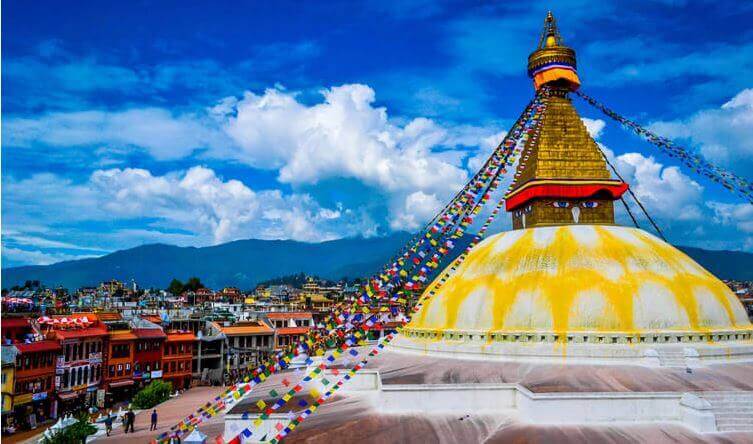
Boudhnath (or Boudha), located 7 kilometers from Thamel, is likely near the top of the list of Kathmandu’s most beautiful tourist attractions. Boudha is one of Asia’s biggest stupas (a Stupa is a place of worship where Buddhists generally visit for worship).
It is a massive structure that can be seen from miles away, but up close, among the throngs of pilgrims and visitors, it’s an incredible sight to behold.
Boudha is a particularly significant location for Buddhists since it was created about 600AD, around the same time the Tibetan King decided to convert to Buddhism. Boudha miraculously survived the devastating 2015 earthquake with just minor damage.
Durbar Square
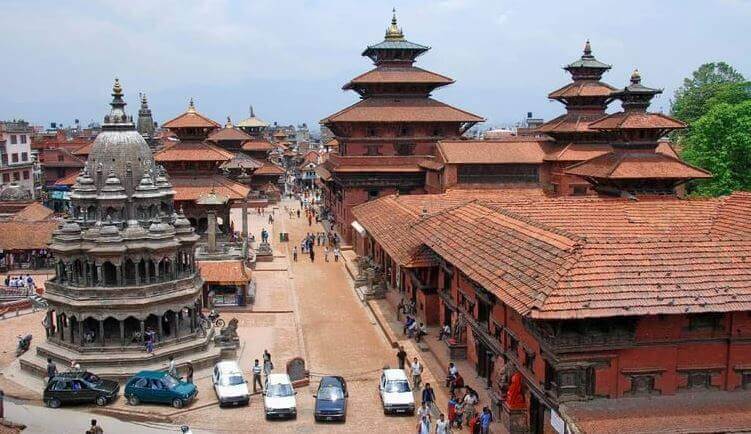
Durbar Square, south of Thamel, was seriously injured in the 2015 earthquake. The UNESCO World Heritage Site of Kathmandu’s Durbar Square sometimes makes a mistake with the Bhaktapur residence.
Durbar Square is the Best Places to Visit in Kathmandu, it’s made up of temples, stupa, and the occasional Sadhu. Durbar Square is about 700 meters from Tham, and once you arrive, you can visit some of the great temples or just sit and watch the people feed the pigeons.
With all the many buildings, it can be very confusing, so here are a few places you can visit in Durbar Square to help you:
The Seto (White) Bhairab is a large sculpture of a seemingly strange creature popular with travelers during the Indra Jatra festival in September. It must have been recorded in 1794.
Jagannath Temple – One of the oldest monuments in Durbar Square, with its mysterious, provocative roofs and three doors that seem to lead to the temple, but only one opens.
Taleju Temple – is said to be the most beautiful temple in Durbar, yet it is difficult to reach Hindus or tourists. The Taleju is 35 meters long and has 12 small temples surrounded by four gates.
Swyambhunath
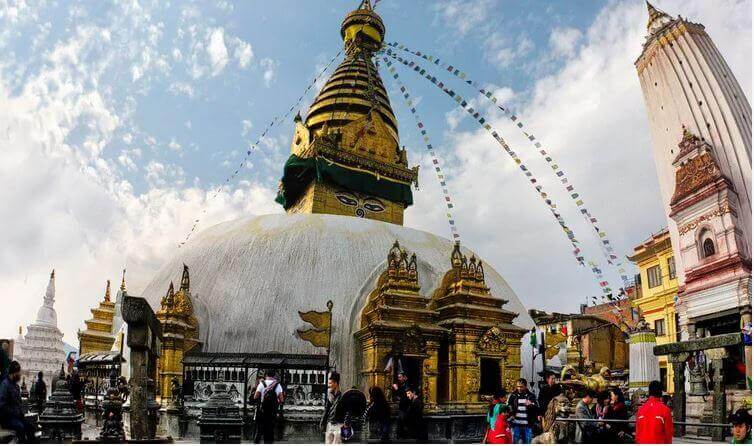
One of Kathmandu’s finest buildings, known as the Monkey Temple, stands just above the city.
Swayambhunath is a UNESCO World Heritage Site, and of course, because it is a beautiful historical site that offers some of the most accessible views of Kathmandu, almost 360 degrees.
Judging by its location, I believe Swayambhunath is one of the great places you can see in Kathmandu. You should see it in Kathmandu.
Prayer flags were found above the Swayambhunath stupa, surrounded by temples, stupas, and statues.
Everything is very close, and if you add people, it may be crowded, but don’t let that stop you from leaving.
Thamel
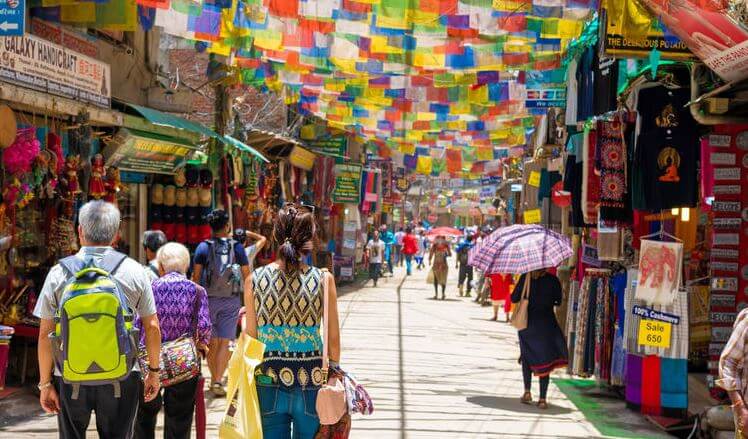
Thamel is a tourist attraction in Kathmandu, with international restaurants, gift shops, pedestrian shops, and street vendors offering catering.
Be prepared for street vendors who are trying to sell you flutes and a variety of unusual goods in Thamel, which is famous for all Kathmandu tourist attractions.
Central Thamel is a quintessential city hangout, and often the first thing on the minds of visitors when they think of things to see in Kathmandu.
Thamel Marg – Thamel Marg is a local highway, and it is very cool to walk on, with prayer flags hanging from one building and the sound of singing instruments blowing in the air, accompanied by the fragrance of incense (or the sweet smell of momos). Many businesses in Thamel Marg were similar, and souvenir prices range from one store to another.
Mandala Street – This incredibly cool street has fairy tales, bookstores, and restaurants, making it seem like you are in the backyard of Melbourne.
Climb up the Himalayan Java Coffee upstairs for a nice cup of coffee, and get a Honey Latte to sit on Mandala Street and watch the world go by.
Pashupatinath
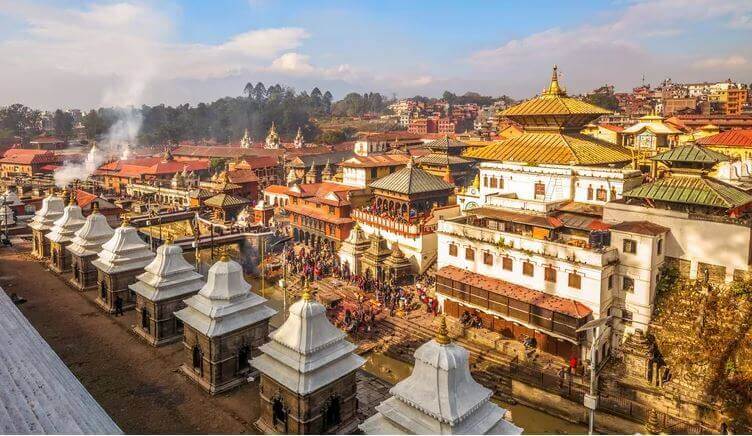
Pashupatinath is one of the largest and most sacred temples in the world, as is shown by a large number of visitors and residents who visit daily.
The temple is home to the national god of Nepal, King Pashupatinath (birth of King Shiva), and is an outstanding example of the pagoda.
It consists of 518 temples, monuments, and ashrams, with only one temple. The temple, on the other hand, was open only to Hindus.
Garden of Dreams
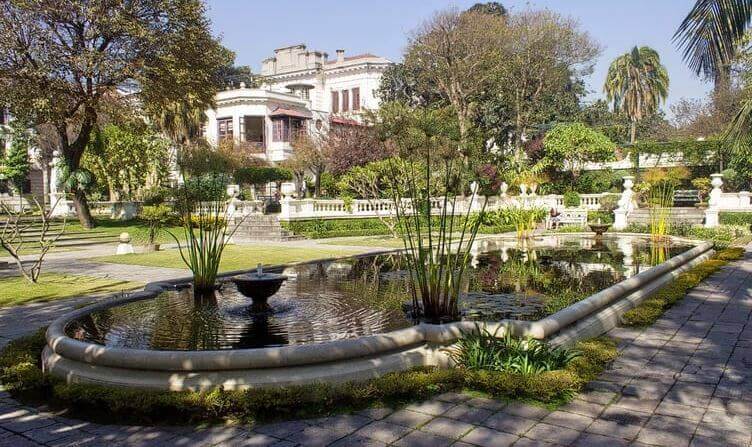
The Garden of Dreams is the Best Places to Visit in Kathmandu, located just south of Thamel near Tridevi Marg and described as “neo-classical,” is a quiet place from the chaos of Kathmandu.
The Dream Garden was established in the early 1920s as a place for residents and visitors to relax and refresh their bodies and spirits.
Outside the gates, green grass, lakes full of lilies, and green trees combine to form a small vegetable park in central Kathmandu.
It may seem strange to see a European-inspired Nepali garden, but having this tiny piece of the sky in one of Asia’s largest cities helps keep you out of the chaos outside the complex.
Kapan Monastery

This is a hidden treasure among the lesser-known monks. The Kapan Monastery, located just above Kathmandu, offers stunning 180-degree vistas.
Kapan is a Tibetan Buddhist tourist attraction for both travelers and tourists seeking relaxation and meditation, and it has grown in popularity in recent years thanks to its magnificent architecture.
Kapan Monastery is one of the rare places you can visit near Kathmandu because of this. The Kopan Monastery now has 360 students, teachers, monks, and lamas studying Tibetan Buddhism.
Hanuman Dhoka
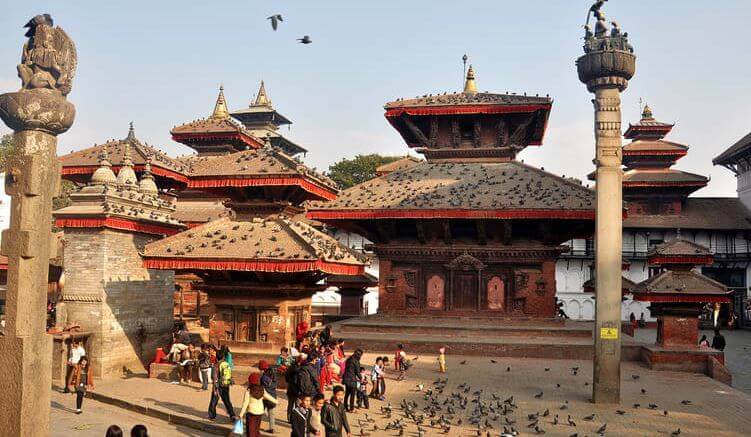
Hanuman Dhoka, the royal palace of Kathmandu, was built during the reign of Licchavi (4th to 8th century AD), although King Pratap Malla expanded the area significantly in the 17th century.
Unfortunately, the main palace was badly damaged by the 2015 earthquake. Nasal Chowk’s main courtyard was open during the study, and the Tribhuvan Museum was close to reopening, with some buildings closed for repairs.
The palace is amazing even outside. Thanks to Hanuman’s patronage of the venerated Rama during the thrilling events of Ramayana, the monkey god now guards many important gates.
Budhanilkantha

The Budhanilkantha statue of the Hindu god Vishnu, located at the bottom of Shivapuri Hill, about six miles [10 km] from Kathmandu, is Nepalandu’s largest and most beautiful stone statue. It is also very confusing.
The Budhanilkantha statue is 5 meters long and sits on a sleeping area inside a 13-meter-long water tank (representing the cosmic sea).
It was engraved on a single black basalt stone of unknown origin. The statue, known as Sleeping Vishnu or Jalakshayan Narayan, represents the deity lying on the twisted coils of the celestial snake Shesha (Shesha is the eternal king, with many heads of snake gods known as Nagas, and Vishnu’s servant).
Shesha’s eleven heads hug Vishnu’s head, and her legs cross. Each of Vishnu’s four hands carries an object representing one of his celestial attributes: the chakra or disc (representing the mind), the conch shell (representing the heart), and the trident (representing (the four elements).
Narayanhiti Palace
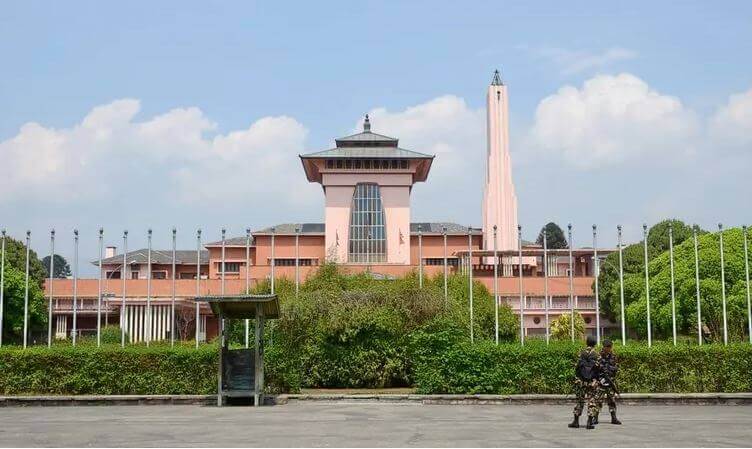
After King Gyanendra resigned as emperor, the palace of Narayanhiti, now a museum, was opened to the public in February 2009. It was the home of all the Nepalese kings of Nepal.
A museum has been established in the part of the Palace that covers a little over 45,000 square feet. Visitors may be amazed at the decoration and the way of life that resides within the walls of the palace, as well as the historical and artistic furniture that has stood in the palace for generations.
There are also important medals and photographs in the exhibition, as well as a number of ancient vehicles, one of which was donated to King Tribhuvan by Hitler.
The Royal Crown and Throne, which are incredibly valuable artifacts, are not available for security reasons. The Narayanhiti Museum is a wonderful place to learn about the history of Nepal and its famous rulers.
White Monastery
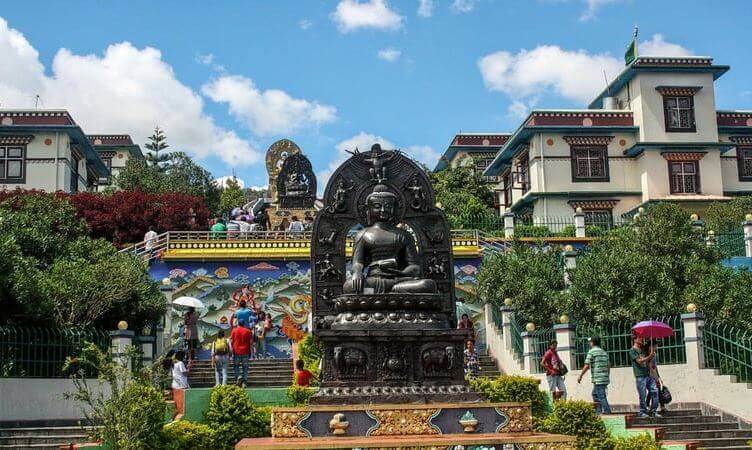
The White Gumba (White Monastery), also known as the Seto Gumba or Druk Amitabh Monastery, is one of Nepal’s most popular tourist attractions.
It is a Nepalese monastery located on the top of Druk Amitabh Mountain in the Nagarjun Municipality in the Kathmandu region. It is north of the Swoyambhunath Stupa, just off the main road (Monkey Temple).
The palace itself is a spectacular piece of Tibetan architecture, with a few murals, paintings, and paintings that will be seen everywhere.
The magnificent scenery of Kathmandu village is also home to the palace. You can also see the amazing panorama of the mountain range when the weather is clear.
Rani Pokhari
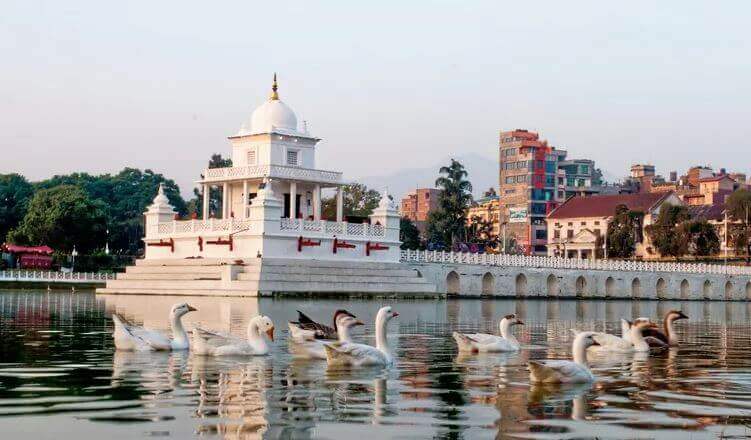
Rani Pokhari is a beautiful and attractive place in Kathmandu. Queen’s Pond is its most common name. ‘New pool’ is a literal translation. This man-made but historic lake can be found in the heart of Kathmandu.
This Kathmandu attraction consists of a square-shaped tank dating back to the seventeenth century. The lake is beyond the city limits.
The lake, which is a landmark of Kathmandu, attracts large numbers of people all year round. Many people feel that the pool is religiously important, which makes it even more popular for travelers.
The king who built the pool is said to have done this to comfort his wife after the death of their son.
Ratna Park
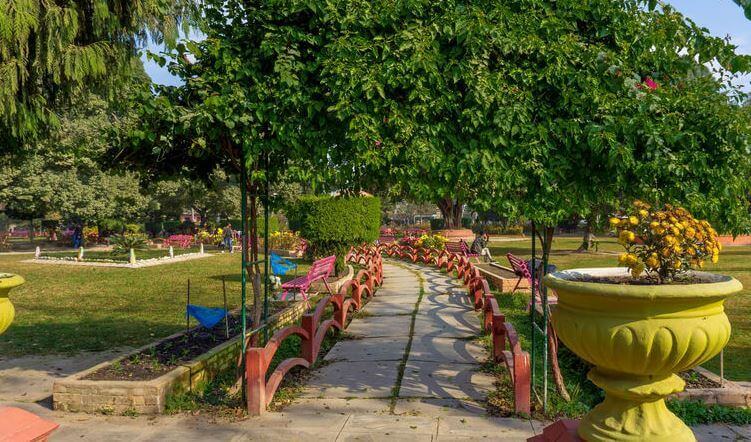
Ratna Park is located in the heart of Kathmandu, north of Tundikhel and south of Rani Pokhari. The park was named after Queen Ratna, King Mahendra’s second wife.
Designed for Nepali children living in the community. Unfortunately, population growth and the nearby street market have had a devastating effect on the park.
Singha Durbar Palace
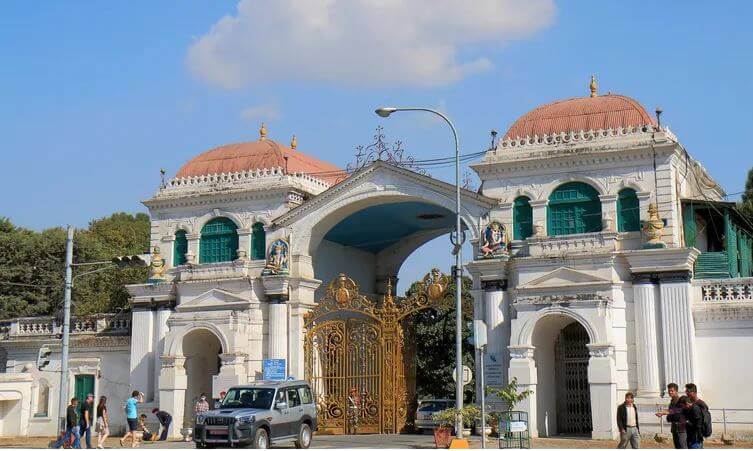
Singha Durbar is a palace in Kathmandu, Nepal’s capital. The palace is located in Kathmandu’s center, north of the Babar Mahal and Thapathali Durbar and east of the Bhadrakali Temple.
Chandra Shumsher JBR erected the mansion in June 1908. Until the 1950s, the palace was one of the most gorgeous in the world.
Today, it houses the Government of Nepal’s facilities, which include Printing Sabha, Rashtriya Sabha, and a few more services.
Shechen Monastery
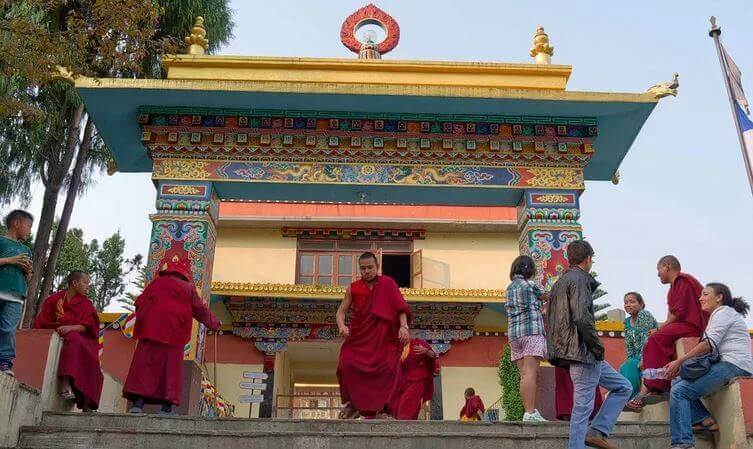
Shechen Monastery is one of the largest and oldest monasteries in the Boudha region and is worth a visit. However, do not be discouraged by the large amount of construction work in the entrance area; all part of the renovation and reconstruction following the 2015 earthquake.
Take your time walking around the temple, looking at the eight stupas to the left of the main temple, and head to the Shechen Guest House for a vegetarian restaurant for snacks or snacks.
It has a very lovely garden. Also, keep an eye out for hidden objects, such as rituals, paintings, and other activities.
Khawalung Monastery
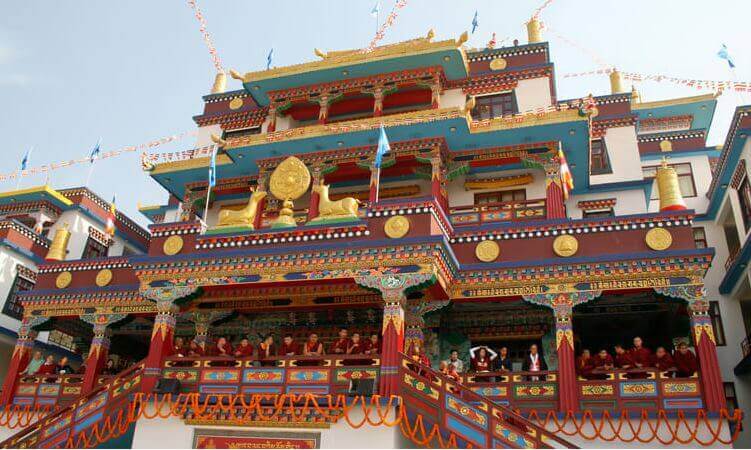
Jigme Dorje Rinpoche, a Vajra master, created the Khawalung Monastery. Who is Yogi’s successor Choying Wangpo Rinpoche who non the secular inheritor of H.H. Trulshik Rinpoche and H.E. Shechen Rabjam Rinpoche founded and blessed the Khawalung Monastery in 2005?
The primary purpose and objective of this monastic organization were to preserve, protect, and promote Buddhist teachings in their entirety.
In particular, the Nyingmapa way of life, one of the four major sects of Vajrayana Buddhism, and the teachings of the treasures (Termas) of H.H. Dilgo Khyentse Rinpoche.
Patan Durbar Square

Patan Durbar Square is a popular tourist destination. The plaza is full of historical sites, temples, and shrines known for their intricate designs.
The ancient palace complex focuses on the religious and social life of Patan and includes a museum with a collection of bronze sculptures and religious artifacts.
The Mul Chowk, Sundari Chowk, and Keshav Narayan Chowk are three main courtyards or chowk on the square. Sundari Chowk is focused on a stone carving project known as the Tushahity Royal Bath.
Nagarkot
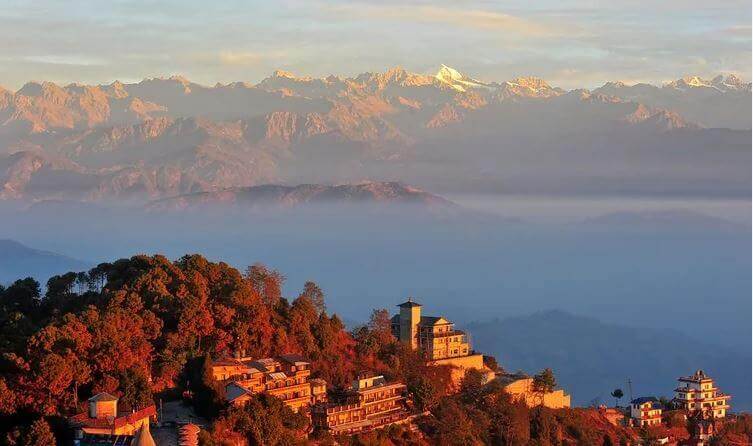
It’s amazing. Many visitors wish they had stayed longer when they arrived. Nagarkot is surrounded by fertile slopes of pine trees, providing spectacular views.
It is a rural district on the outskirts of Kathmandu. It is a beautiful peak with spectacular Himalayan vistas, a mountain range, and sunrise and sunset.
Chandragiri Hill

Chandragiri is undoubtedly the ideal spot for birding views over the Kathmandu Valley, the surrounding hills, and the majestic Himalayan mountains.
The Chandragiri Hills Resort enhances the experience by providing you with transportation (cable car to and from the resort when booking), as well as a place where you can relax from the stress of life, sit back and relax.
Friendly staff, a large architectural area (assuming it is located on a hill), clean and comfortable living spaces, and decent food with a variety of alternatives around the experience.
Shivapuri National Park
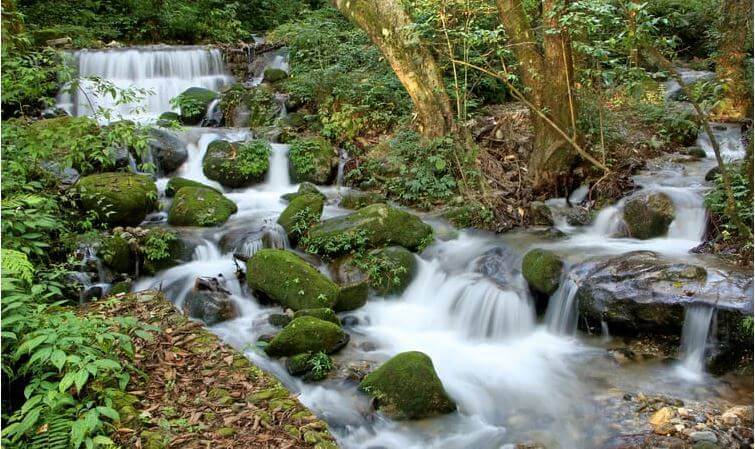
It was first designated a wildlife sanctuary in 1976 before being designated as a nature reserve in 2002. Shivapuri-Nagarjun National Park is an important water catchment that supplies hundreds of thousands of cubic meters of water to the Kathmandu District every day.
Shivapuri Nagarjun National Park is rich in vegetation and wildlife. The floral diversity of the Shivapuri-Nagarjun national park is significant because of its location, climate change, and climate. In this tropical area of Nepal, there are 2,122 plant species and four distinct forests.
Dakshinkali Temple
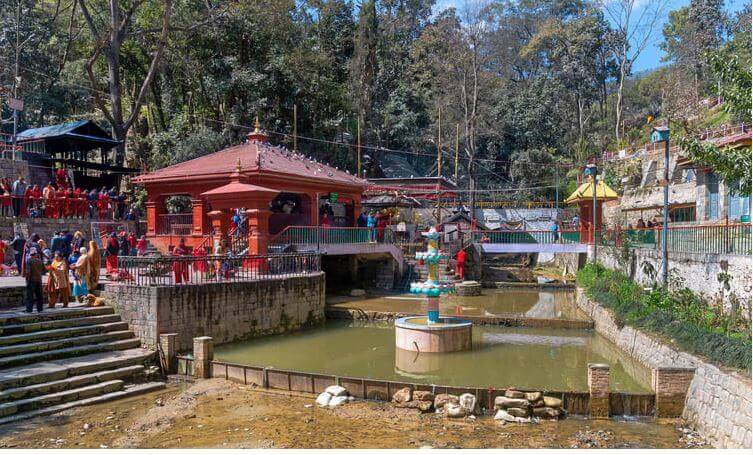
The Dakshinkali Temple is about a mile from the town of Pharping and is about 14 miles [22 km] from Kathmandu. The temple is one of the most famous in Nepal and is dedicated to the cruel and fearsome goddess Kali.
The temple’s reputation goes back to its customs and traditions. Animals, especially goats and foxes that have not yet been purchased, are offered in this holy place twice a week as a gift to the angry wife of Lord Shiva.
Rani Rashmoni, devoted to Kali, built a shrine in 1855. The Dakshinkali Temple derives its name from the combination of the words ‘Dakshin,’ meaning ‘south,’ and ‘Kali,’ representing the deity worshiped here.
The image of the goddess is portrayed as standing on a corpse, symbolizing the victory over good over evil. The four-armed statue, adorned with a sword in one hand, a skull with a sword, and a beheaded head in the third, depicts a powerful, empowered image that has come to conquer evil and emerge victoriously.
Bhaktapur Durbar Square
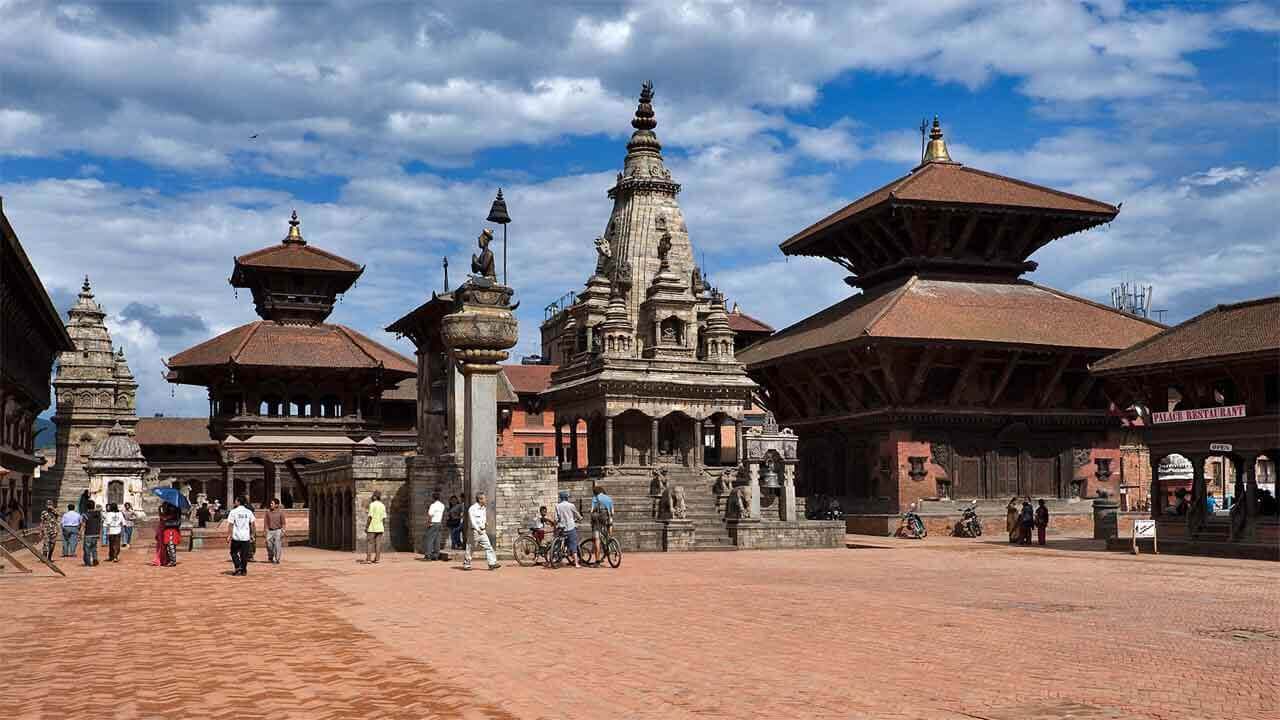
Bhaktapur is one of the cities of the former Kathmandu Valley region. Durbar Square is a UNESCO World Heritage Site in front of the former Bhaktapur empire.
Although the temples of the plaza were not seriously damaged, one of the collapsed buildings was a shrine called Batsala Devi. This stone temple is undoubtedly a small replica of the Krishna Mandir temple near Patan City.
This stone temple has a three-step foundation, a porch of fourteen octagonal pillars, eight building blocks over its cornice in the form of octagonal turrets erected in small temples at the corners, and four small leaflets on four sides.
Phulchowki
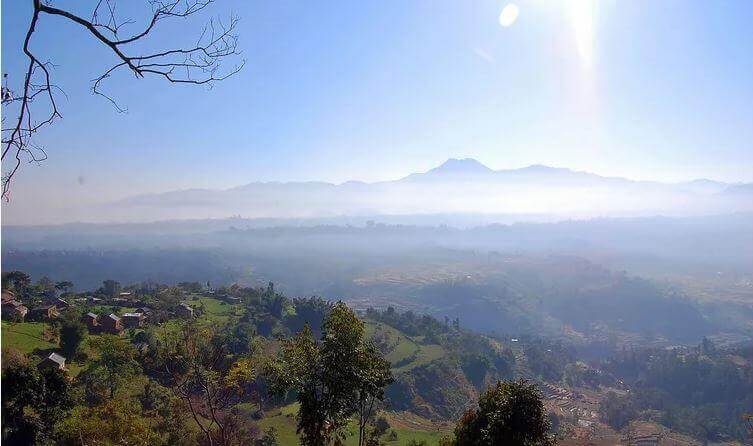
Phulchowki is the highest hill in Kathmandu, covered with snow all winter and cold even in summer. Although the upper floor is guarded by the Nepalese Army, visitors can get inside to see the tower and the goddess Phulchowki.
The concoction is covered with lava stone in an unusual way. You can view Kathmandu and other neighboring sites and mountains from Eso Eagle, 2700 meters above sea level.
Getting there is also fun as you can drive/walk up into the dense jungle, uninterrupted while listening to the birds. Rhododendron blooms here in the spring, and the turning areas of the mountain cherry turn red.
Khulekhani

Kulekhani Dam is 47 km (2 hours) from Kathmandu. It is amazing that you are surrounded by such a beautiful place near the city. A visit to the powerhouse and learning about its operation can be a unique and exciting day.
Even if you don’t want to go inside the electric house, the view from the dam and the electric house is more than enough to entertain you.
Besides the dam and the powerhouse, you can visit a neighboring village and talk to the residents about their culture. Fish is a local specialty; it is incredibly amazing, served at local restaurants.
Kakani
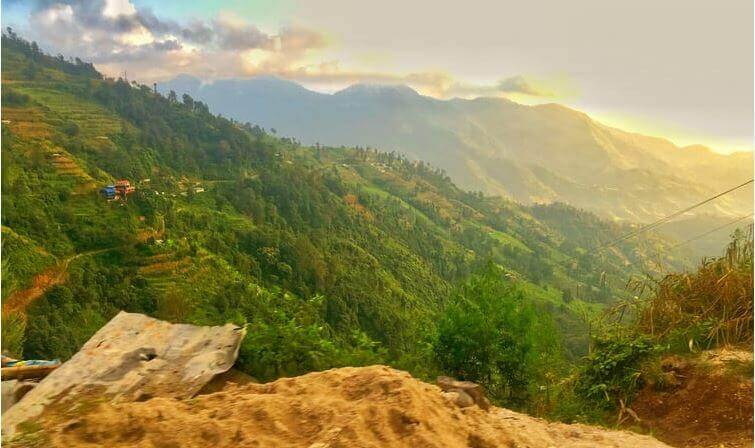
Kakani is a lovely and famous place in Kathmandu for a beautiful view of the mountains, Kakani is more than 2000 meters above sea level.
This mountainous station is home to the British Gorkhas welfare center as well as a number of regular hotels and Tent Luxury Camps.
The hamlet also has a memorial garden for victims of Thai Airways International Flight 311, Buddhist temples, and some great mountain views, including the Kathmandu Valley.
Kakani is best known for its indoor and outdoor tours and is only an hour and a half from the capital. It is a perfect place to see the sunrise and sunset in the morning and evening.
With a spectacular view of the mountains and valleys, Kakani is home to rich flora and fauna. There is a lot of vegetation and animals because this area has dense forests. Animals include trees such as Pine, apple, Kafal, and Chilaune.
FAQ
Which is the most visited place in Nepal?
Most visitors spend some time in Kathmandu, seeing spiritual and historic sites before continuing on to other regions of the nation.
Outside of the city, the greatest sites to visit for wildlife watching are Chitwan National Park and Bardiya National Park, as well as the lakeside resort of Pokhara, which is renowned for trekking.
Trekkers will find a wide range of alternatives across Nepal, with the Everest, Annapurna, and Langtang regions being the most popular.
What are the places to visit in Kathmandu?
Swayambhunath Stupa, Pashupatinath Temple, Monkey Temple, Boudha Stupa, Basantapur Durbar Square, Bhaktapur Durbar Square, Patan Durbar Square, Garden of Dreams, Hanuman Dhoka Durbar, Narayanhiti Palace Museum and many more.
Even after the catastrophic earthquake, Nepal is still one of the most enticing sites on the planet, with its everlasting natural beauty. Annapurna Base Camp Trek (ABC Trek), Upper Mustang Trek, Khaptad National Park, Everest Tea Garden in Sindhupalchok, and Karnali are some lovely sites in Nepal.
What is Kathmandu famous for?
Kathmandu is well-known for its holy monuments. The city’s terrain is dotted with temples, monasteries, and stupas, notably the Pashupatinath Temple and the Changu Narayan, both of which are known for their gorgeous, detailed religious artworks.

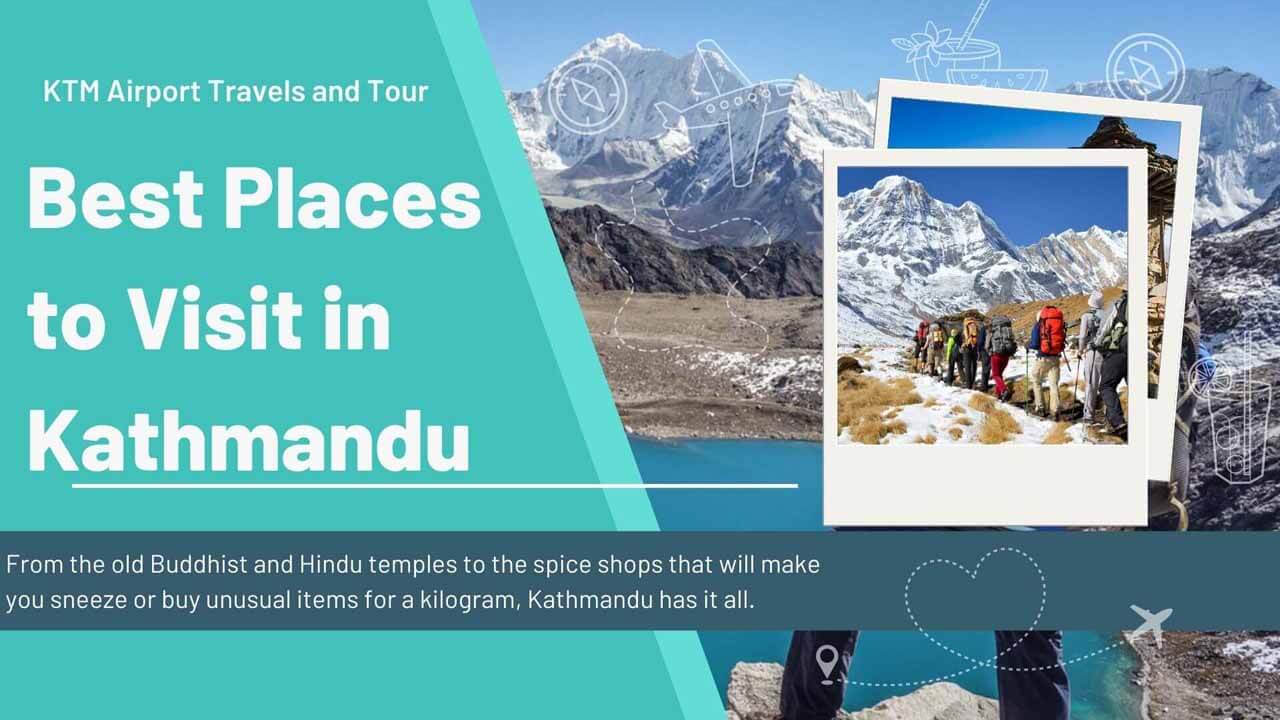


1 Comment
[…] Nepal is a breathtaking utopia for individuals who have a wanderlust for the great outdoors. A wonderful place to purify for mental clarity and […]